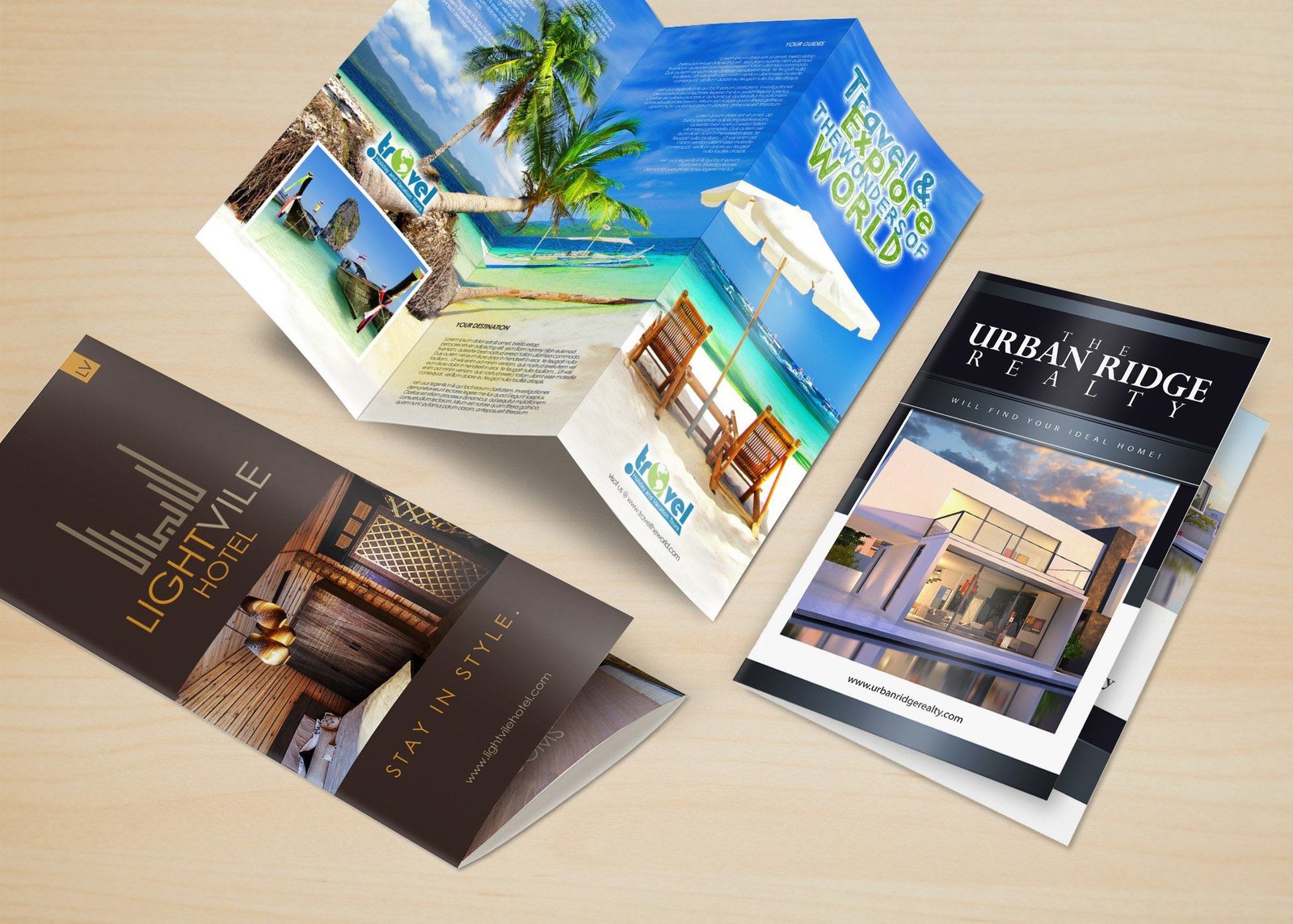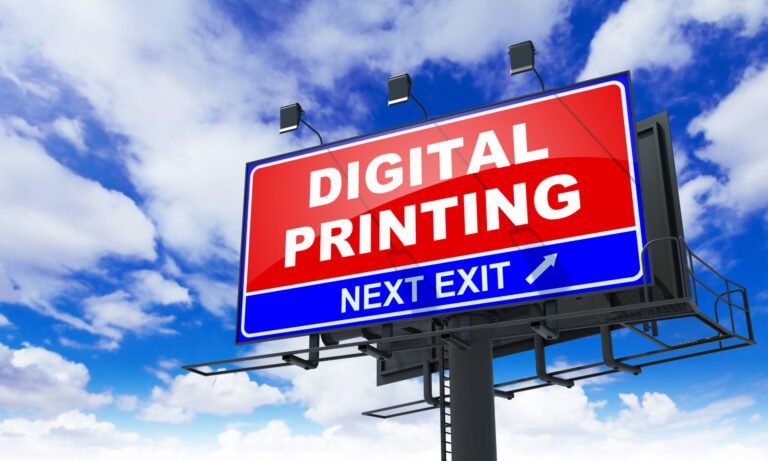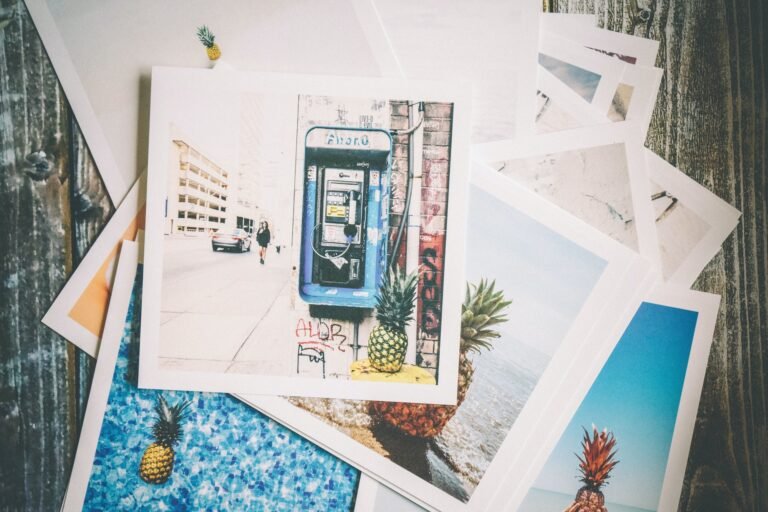Brochure Printing Services in Uganda
Every successful marketing campaign includes brochure printing. Brochures are distributed at conventions, used to highlight details about a company’s new collection, or include each new customer purchase. They are an efficient, adaptable, and cost-effective promotional tool. When deciding to create brochures for your business, one of the major factors to consider is a fold that complements the design of your brand and brochure.
Giants Printing And Designs Solutions Uganda creates custom brochures that enable you to tell a more complete story about your business and its capabilities. Their variety of paper stocks and sizes will undoubtedly assist you in achieving the desired look for your project, whether it’s a handout, takeaway, or presentation. Additionally, each brochure is crisply folded before it is shipped to you, ensuring that you can begin using them immediately.
Giants Printing and Designs Solutions’ customized brochures will assist you in telling the entire story with folds and panels that help organize or highlight information in three-fold options:
4-panel bi-fold, 6-panel tri-fold, and 6-panel z-fold brochures printed on two different paper stocks: Thinner, more flexible standard paper or a more durable premium cover stock are available, as are design options for all sizes and stocks. With several brochure samples at your disposal, you have a diverse selection to choose from.
Specifications for Made to Order brochures include materials, bleeds, and margins.
Folding techniques include bi-folding, tri-folding, and Z-folding.
Unfolded sizes include 8.5″ x 11″, 9″ x 8″, 8.5″ x 14″, 9″ x 16″, 11″ x 17″, or 11″ x 25.5″.
Paper stocks include Standard glossy, Standard matte, Standard uncoated, Standard recycled, Premium glossy, Premium matte, or Premium uncoated.
Bi-fold Brochure
As the name suggests, this brochure features two panels that provide ample space for lengthy text or large images.
3-Panels folds
Most brochures benefit from three-panel folds. Three-panel folding options include the trifold or letter fold, the z-fold, and the gatefold. They contain just enough information about your product or business to be useful.
Trifold brochure
Trifold brochures are folded twice to create three panels for a concise, visually appealing, and informative brochure. It is the most frequently used folding method.
Z-fold Brochure
This frequently used brochure is printed on both sides with six panels.
The following are some of the most frequently printed brochure designs by Giants Printing And Designs Solutions Uganda.
- Bi-fold brochure 9″ x 8″ on standard glossy paper. It’s measurements are 8.00″ x 9.00″, 203 x 229 mm, 2400 x 2700 pixels 8.25″ x 9.25″, 210 x 235 mm, 2475 x 2775 pixels Full Bleed
- Bi-fold brochure 8.5″ x 11″.
- Bi-fold brochure 11″ x 17″ on standard glossy paper. Document Trim Size 17.25″ x 11.25″ (438 x 286 mm, 5175 x 3375 pixels) Full Bleed
- Tri-fold brochure 8.5″ x 11″. When closed, the size is 3.70″ x 8.50″, 94 x 216 mm. Paper Stock: 100 lb. aqueous coated paper.
- Tri-fold brochure 11″ x 25.5″ on standard glossy paper. 654 x 286 mm, 7725 x 3375 pixels. Full Bleed
- Tri-fold brochure 8.5″ x 14″ on standard glossy paper.
- Tri-fold brochure – 9″ x 16″ on standard glossy paper.
- Z-fold brochure 8.5″ x 11″ on standard glossy paper. It has 3375 x 2625 pixels.
With all of the designs above, the finished artwork extends to fill the entire bleed area, avoiding white edges.
Quick tips from Giants Printing on creating a custom brochure:
Selecting a high-quality pamphlet stock:
• The glossy finish should be lustrous and reflective, making it ideal for photographs and images.
• Standard: 100-pound paper (5-point type); Premium: 100-pound cover (9-pt).
• Matte finishes are less reflective, resulting in a smoother appearance and increased contrast.
• Standard: 100-pound paper (5-point type); Premium: 100-pound cover (9.5-pt).
• The uncoated stock should be completely glare-free, making it ideal for reading and writing.
• Standard: 70-lb (5.5-pt) paper; Premium: 100-lb (5.5-pt) cover (13-pt).
• Recycled stock has a more natural feel since it is made entirely of recycled materials.
• Standard: 80-pound (6-point) paper; Premium: 110-pound cover (13-pt).
How to organize your customized brochure:
• Utilize a single primary message and a strong, direct call to action.
• Highlight critical information with panels and bulleted sections.
• Create a “menu” listing all of your available services and options. and
• Include a section on social media, complete with logos and contact information.
Tips for creating a professional-looking brochure:
• Limit yourself to three distinct font sizes.
• Select a well-known option, such as standard glossy paper.
• Select one of our thicker cover stocks to make a statement.
• Use a holder to elevate your brochures and draw attention to them.
Frequently Asked Brochure Printing Questions
- Are the dimensions depicted folded or unfolded?
The calculator calculates the dimensions of the brochure when it is unfolded and laid flat on a surface. This means that if you want a folded trifold brochure measuring 8.5″ x 3.69″, the unfolded size should be 8.5″ x 11″.
- What information should be included in my brochure?
Cover – A prominent image that conveys the essence of your product or service. Include your company’s logo and name to help customers connect the dots.
High-Resolution Images – For your brochure design, use 300 dpi resolution images. This resolution ensures that the photo will not print blurry.
Features and Benefits – The copy should elaborate on your product’s or service’s primary selling points. Divide it into a list or several sections to make it easier to read.
Call to Action – Include coupons or promotions in the brochure to encourage people to visit your store or e-commerce site.
Contact Information – Don’t forget to include all of your business’s contact information, including a telephone number, physical address, email address, and a website, for the convenience of your customers.
- How many words and images should my brochure contain?
The most visually appealing brochures make extensive use of images to guide the reader through the content. Each panel contains a photograph or illustration that assists in introducing or illustrating the content in detail. Your copy should be as concise as possible to maintain the reader’s attention on your primary topic.




